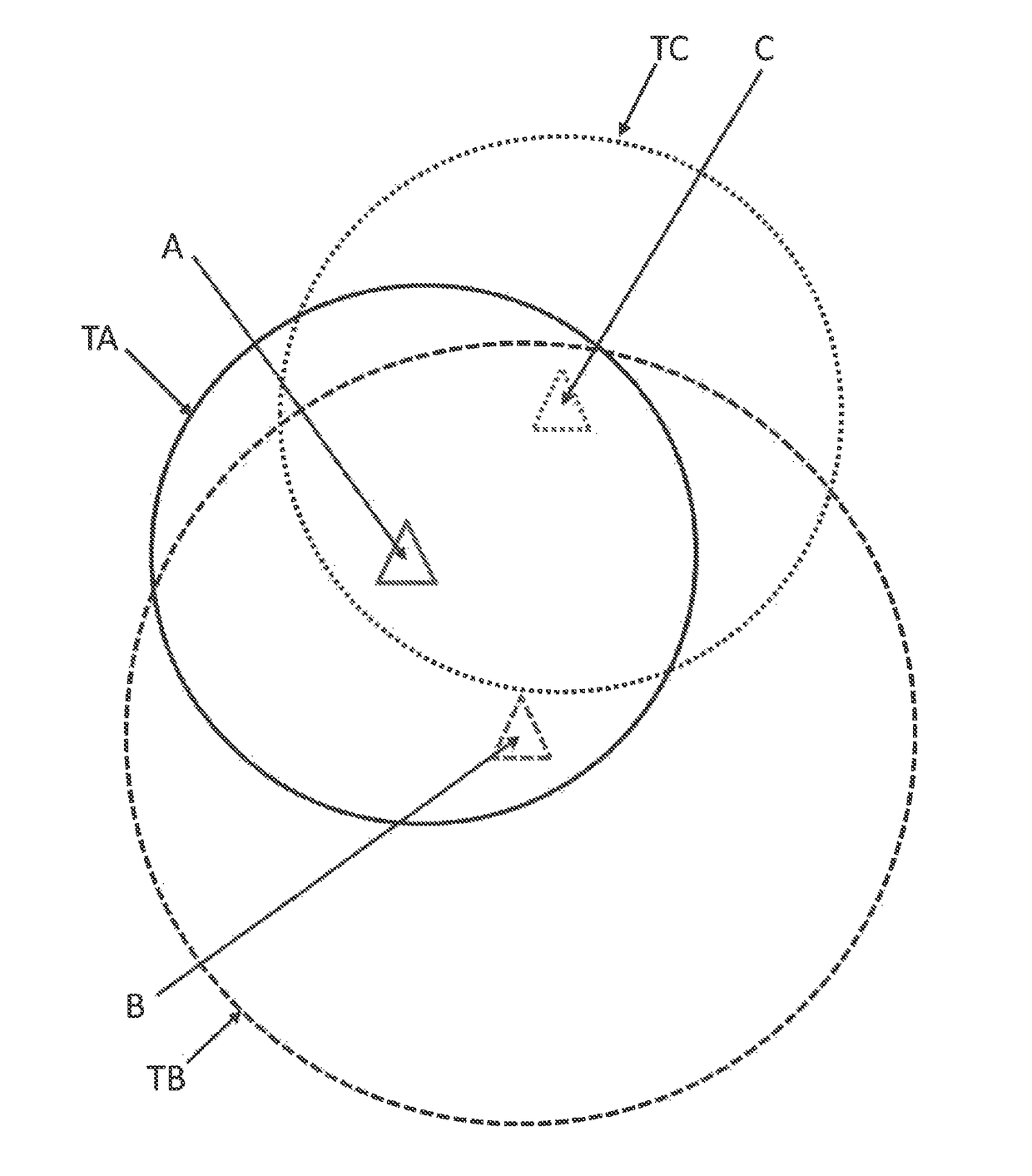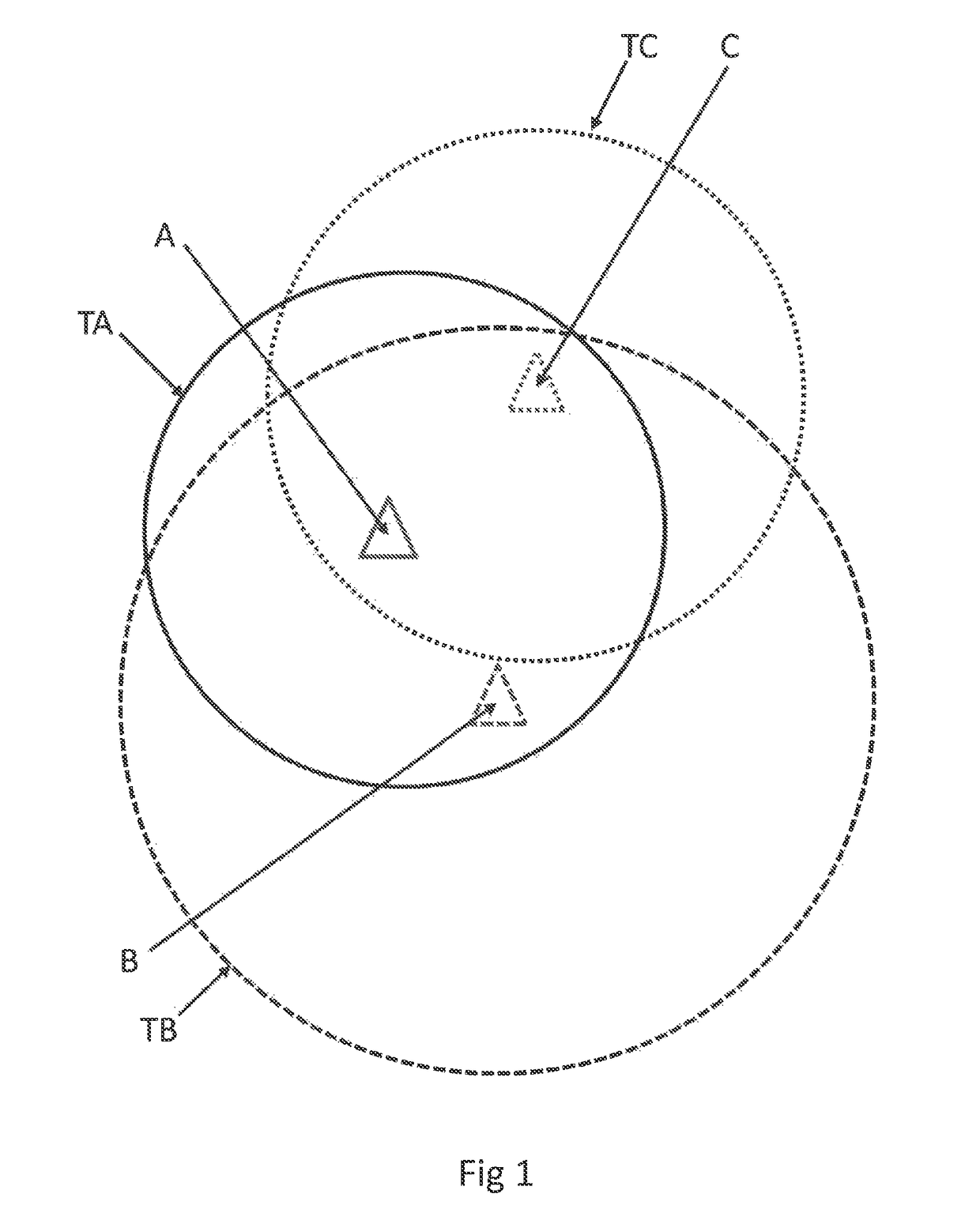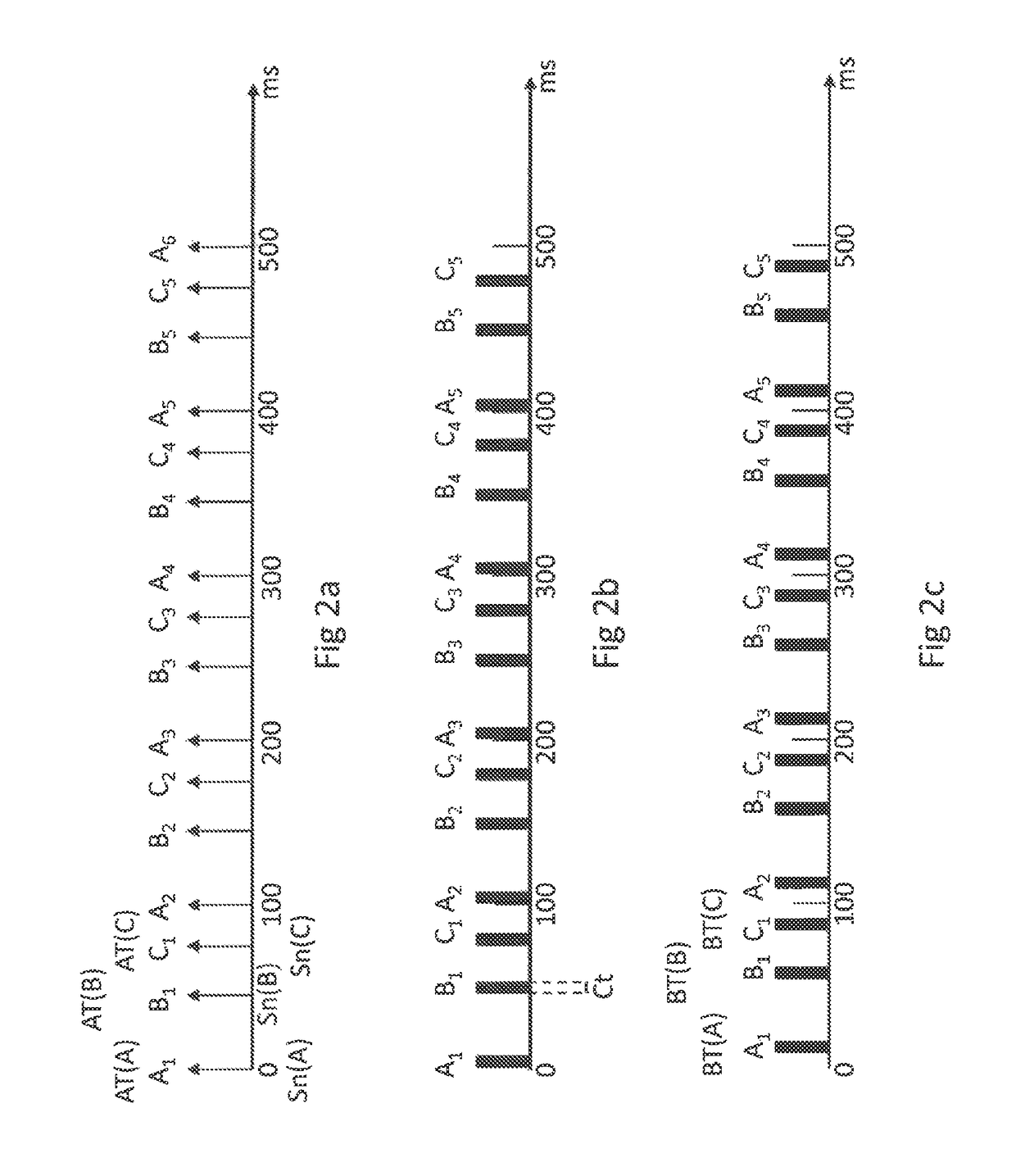Method for communication within a co-operative system
a cooperative system and communication method technology, applied in the field of cooperative systems, can solve the problems of inability to predict the time it takes to compute the information package precisely, the introduction of delay in time, and the transmitter's back-off, so as to avoid collisions between pluralities of broadcasts from different communication units, control the spread of broadcasting, and improve the tracking of individual communication units
- Summary
- Abstract
- Description
- Claims
- Application Information
AI Technical Summary
Benefits of technology
Problems solved by technology
Method used
Image
Examples
Embodiment Construction
[0036]FIG. 1 schematically shows a co-operative system CS according to an embodiment. The co-operative system comprises a plurality of communication units A, B, C. The communication units A, B, C can be of any type suitable to be active in the co-operative system CS, and be arranged in a vehicle or a road side unit. In the example all the communication units will be referred to as arranged in vehicles.
[0037]The vehicles in which communication units A, B, C in FIG. 1 are located can all be travelling in the same direction, in different directions and / or on the same or on different roads. The communication units A, B, C broadcast on the frequency / channel designated for the co-operative system CS. The communication units A, B, C are all equipped with or have access to a raw data collector RC capable of receiving / sensing and processing the raw data D into an information package P. The communication units A, B, C are equipped with a radio communication unit arranged to communicate in the...
PUM
 Login to View More
Login to View More Abstract
Description
Claims
Application Information
 Login to View More
Login to View More - R&D
- Intellectual Property
- Life Sciences
- Materials
- Tech Scout
- Unparalleled Data Quality
- Higher Quality Content
- 60% Fewer Hallucinations
Browse by: Latest US Patents, China's latest patents, Technical Efficacy Thesaurus, Application Domain, Technology Topic, Popular Technical Reports.
© 2025 PatSnap. All rights reserved.Legal|Privacy policy|Modern Slavery Act Transparency Statement|Sitemap|About US| Contact US: help@patsnap.com



